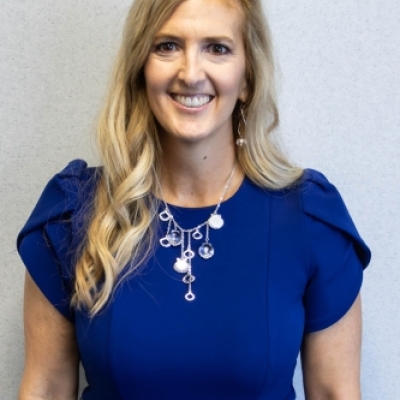A special issue of the Journal of School Choice is now out, focusing entirely on homeschooling research. It includes 16 studies from 23 authors at more than a dozen institutions. Hard data on homeschooling has long been scarce, so this issue is worthy of attention. Two of the studies in it are by Angela R. Watson, director of the Homeschool Research Lab at the Johns Hopkins Institute for Education Policy. The first provides descriptive data on homeschool participation before, during, and after the pandemic. The second, co-authored with Alanna Bjorklund-Young, digs into homeschool participation by race and ethnicity.
Plentiful were the reports that homeschooling participation had skyrocketed during Covid, but these were often anecdotal and riddled with confusion as to what constituted homeschooling during this unprecedented and chaotic time. Watson uses data from both the Census Bureau’s Household Pulse Survey, which was first administered at the height of the pandemic, and state-level data housed in Johns Hopkins’s Homeschool Hub that were gathered from individual state departments of education.
National Pulse data captured self-reported homeschooling participation at the height of the pandemic schooling disruption in 2021, with 21 percent of parents then reporting that their child was being homeschooled. In the 2022–23 school year, data from the same source show that nearly 6 percent of all K-12 students in America were homeschooled, compared to an estimated 2.8 percent before the pandemic. (For comparison, private school students represented around 9 percent of the total school-aged population in 2022, and charter school students represented 7 percent.) By 2023–24, several years after the start of the pandemic, Pulse data show that the homeschool percentage was holding at 6 percent.
To bolster the self-reported data, which may be messy as a result of parents’ understanding of homeschooling, Watson examines data from about half of the states that have maintained longitudinal trends on homeschooling—some for up to 20 years. Unfortunately, consequential states like Texas, Oklahoma, Nevada, and Arizona are missing because they don’t mandate reporting of homeschooling status. Since most school enrollment reporting is conducted in the fall, Watson uses the 2019-20 school year as the baseline comparison to measure net growth in homeschool participation going into and out of the pandemic. The key finding is that net growth has decreased since the height of the pandemic but is still above pre-pandemic levels. Specifically, she estimates an average pre-pandemic rate of homeschool participation growth of 4 percent. Interestingly, in the most recent year (2023-24), there was a clear pattern of regrowth in homeschooling that obviously can’t be attributed to the pandemic.
More specifically, this is how it played out over time: Since 2010, homeschooling in general has increased by around two to seven percent per year. It rose by a whopping 39 percent in the 2020–21 school year; declined by 3 percent in 2021–22; and shrank by another 7 percent in 2022–23. But then data indicate that the decline reversed in the 2023–24 school year, with homeschool participation increasing by 4 percent over the prior year. All but 2 of the 20 states with data for this particular analysis showed such a rebound in 2023-24. (For what it’s worth, analysts say that we saw a similar pattern of rebound after the Great Recession was over.) All that said, data from one of the two exceptions, New Hampshire, is called into question. That state’s decline, Watson finds, coincides with a huge increase in participation in New Hampshire’s universal Education Freedom Accounts (aka education savings accounts or ESAs), propelled by an expansion of eligibility and a boost in funding. Homeschooled students in The Granite State could use the ESA benefits but, if they did, the state no longer counted them as homeschooled. In other words, their outlier status is likely more about changes in reporting than decreases in homeschooling.
Some reports find that student safety is a primary factor driving the decision to homeschool, even surpassing moral/religious and academic concerns. Watson speculates, too, that the explosion of new school choice legislation during and after the pandemic emboldened curious families and that the growing acceptability of choice may mean that families are more comfortable reporting their homeschool status.
The companion report by Watson and Johns Hopkins senior research and policy analyst Alanna Bjorklund-Young examines “the changing face” of homeschooling. Two different data sources show that homeschooled students are more racially diverse than 25 years ago. For instance, the National Household Education Survey (NHES) finds that the portion of White homeschooled students decreased by 4 percentage points from 1998 to 2023, mirrored by an increase of 4 percentage points among students of color. But NHES also uses a more traditional definition of homeschooling that likely underreports participation because of the various innovations—think school co-ops, micro-schools, and hybrid schools—that became go-to options during Covid and are still with us today.
Taken together, these reports point to the need for a better definition of homeschooling that captures its variations without confusing everyone. It once conjured the idea of a stay-at-home mother educating her children around the kitchen table. But homeschooling is not limited to a home location; it’s a flexible approach to education that allows kids to learn outside the traditional classroom. Still, one can’t blame parents for confusing it, for instance, with full-time virtual schooling since both occur outside the traditional classroom and often take place in the home.
We also need to adjust our conventional thinking about homeschooling. Outdated is the stereotype that it is confined to White, upper-income, Christian families who educate their children at home out of a faith that distrusts public education. As the data improve, so will our picture of homeschooling in America today. And the burgeoning of school choice demands nothing less.
SOURCE: Angela R. Watson, “Homeschool Participation: Post-Pandemic Persistence and Growth Trends,” Journal of School Choice (December 2024).
SOURCE: Alanna Bjorklund-Young and Angela R. Watson, “The Changing Face of American Homeschool: A 25-Year Comparison of Race and Ethnicity,” Journal of School Choice (December 2024).




